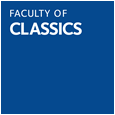This paper investigates the dynamics involved in the embedding of the fable of “The Hawk and
the Nightingale” in Hesiod’s Works and Days. This was evidently a traditional fable, very
selectively treated by Hesiod (section 1). The hawk should not be regarded as articulating the
moral of the traditional fable (“might is right”), tralatitiously handled by Hesiod (section 2):
more probably, Hesiod suppresses a ‘second act’, in which the rapacious hawk got his just
deserts. This two-act version is attested in the medieval Ademar-codex of Phaedrus (section 3),
and perhaps already presupposed in Euripides’ Hecuba (section 4). Section 5 speculates about
the various adaptations undergone by a presumptively original fable both within the fabular
tradition itself (Aesop. 4 P. [=Hsr.; 8 Ch.]; Ad. 39 [=567 P.]) and when embedded in Works
and Days and Hecuba. Section 6 aims to reveal the sophistication and complexity of the
interaction between Hesiod’s fabular narrative and his wider paraenetic poem.
Phaedrus
,fable in tragedy
,Aesop
,imagery
,embedded fable
,Euripides
,Ademar
,might is right
,Hesiod
,hawk and nightingale
,Hekabe
,narrative ellipse



